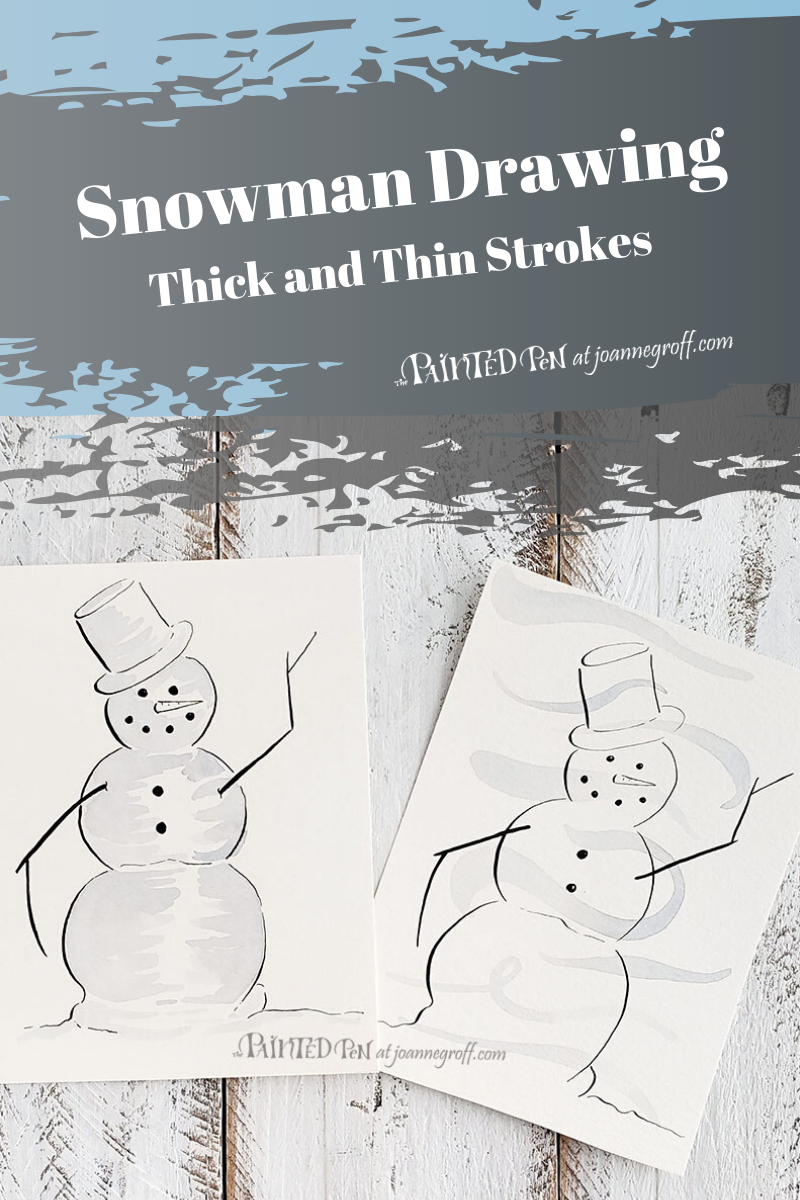
Snowman Drawing
Thick and Thin Strokes
Who wants a snowman drawing for the middle of winter? I know, I know … we all want spring, but it isn’t here (sorry for that bit of reality), so let’s have a little fun while we wait.
I have never been big on monotonous tasks. You know, those jobs that you have to do over and over and over again. Like cleaning or practicing letter forms. It’s a fight with boredom, and boredom doesn’t help learning. It helps quitting.
Now, I have nothing against practice. In fact, I think practice is key to getting better at anything and that requires a bit of monotony.
Or does it?
I believe there are ways to get better at nib and brush control without resolving to boredom..
… and I have a hard time resisting a silly snowman, so let’s combine the two.
We’ll make a snowman drawing while concentrating on our thick and thin strokes. We’ll compare calligraphy pen strokes to brush strokes and use them both to practice tool control because applying pressure works similarly with both nibs and brushes.
What you need:
- Watercolor paper, Canson is fine for practice
- Gray watercolor paint
- Waterbrush or round brush
- Black ink
- Calligraphy pen and nib
- Paper towel
- Thick & Thin Strokes Worksheet, optional (pictured below)

Warm Ups
First we’ll warm up with a few basic strokes. They can be random strokes, but try to mix your pressure and repeat each a few times. Your hand will get visibly steadier with each stroke. Make sure you include strokes with curves as they require a different control of your tool.
Apply pressure to your nib or brush to achieve a thick stroke, and lightly touch the paper with your nib or brush to make a thin stroke.
I have created a warm up sheet for you to give you some ideas for strokes to practice that also happen to be parts you can use to make your snowman drawing (free for email subscribers in the Resource Library). Practice them with your nib and again with your brush. The tools work similarly but the nib will feel firmer than the brush, so you’ll need to adjust your pressure accordingly.
Another difference between a nib and a brush is that a brush can make thick strokes from side to side, but a nib won’t. You have to turn your paper and make those strokes with downstrokes. The tines on the nib need to rest with equal pressure to make a thick stroke, so when you run the nib side to side, you can only make a thin stroke.
Let’s get started on that snowman drawing.
Sketch your snowman in pencil. Try to incorporate some of the practice strokes you used as a warm up.

Now, trace over your snowman drawing with your calligraphy pen. Practice those thick and thin strokes. I like to add thicker strokes to the shadowed areas and thinner strokes to the highlighted areas. You can make the snowman your way, just remember to practice tool control with a mixture of thick and thin strokes.

Wait for it to dry completely before erasing the pencil lines.
Add water to your gray paint until it’s very light gray. This will give the appearance of a white snowman on a white page.
Paint the gray onto your snowman. Again, try to use thick and thin strokes. You can make this as abstract or realistic as you like. It’s up to you.
Less Abstract
More Abstract
Now, you can create as many snowmen as you like. Get playful with them as you practice your thick and thin strokes.

And before you know it, you’ll have painted your way to spring.
Happy creating!


